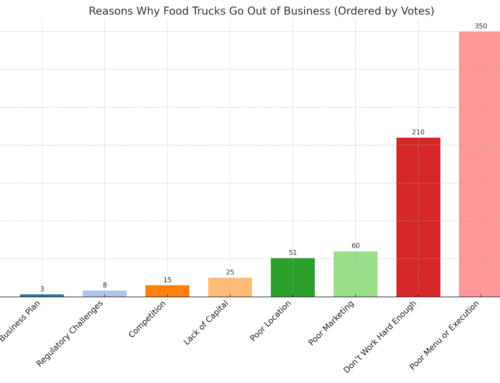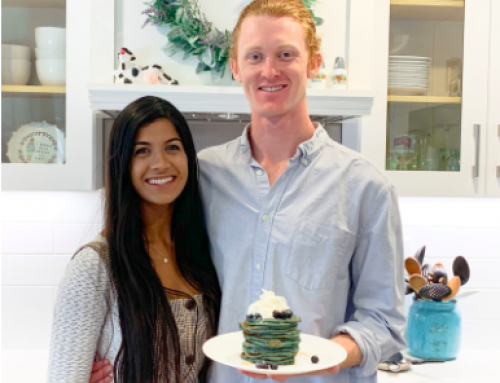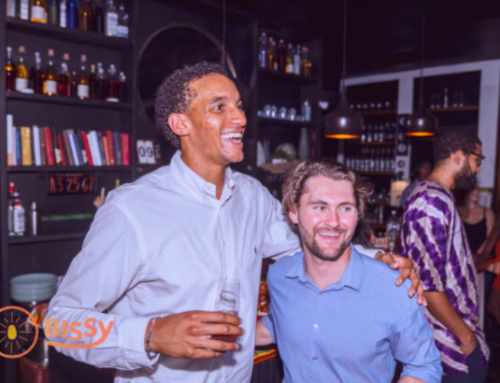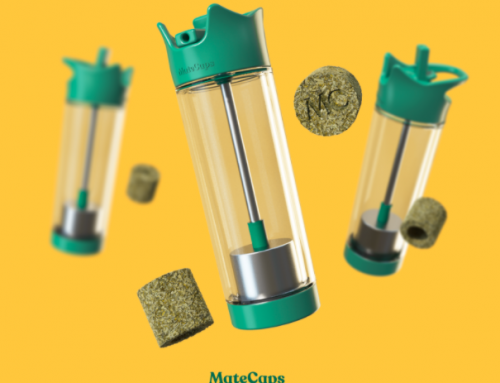Hello! Who are you and what food business did you start?
My name is Elyse Sara, and I am the Founder of Fat Leaf Water, a cactus water based sports hydration beverage. I began the development process back in the summer of 2018. We then ran a successful Kickstarter campaign this past summer, and we are launching on Amazon this coming fall season, so it’s a very exciting time for us!
We currently offer three flavors, all sold in 16.9 oz bottles – Rimrock Red (featuring raspberry and blueberry flavors), Key Lime Mirage (with key lime and meyer lemon), and Mojave Citrus (which contains tangerine, blood orange, turmeric and black pepper). Since we are just getting in gear to launch, we are still exploring our customer base, but we are aiming to target plant-based athletes, health-minded parents, and those focused on overall wellness.
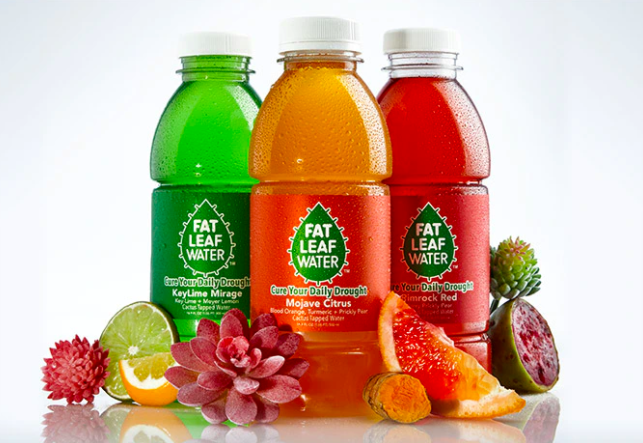
Fat Leaf Water lineup of sports beverages.
All three of our varieties are filled with electrolytes, antioxidants and taurine, offering a guilt-free and delicious way to hydrate! Our brand culture values the joy of movement, sustainability and protecting our environment, which is why we donate a percentage of profits to The Nature Conservancy.
Up next, we will begin the R+D phase for 2 oz elixir shots and a powdered version to be sold in individual packets for customers who are particularly on the go!
What are your ballpark monthly or annual revenue numbers?

Elyse Sara, Creator of Fat Leaf Water.
We set out to raise $30K for our Kickstarter campaign, and we achieved that plus a little extra. Overall, I think Kickstarter was most useful as an avenue for PR and review generation. Many of the contributions we received were not for product, but instead were either just straight donations or for our non-product rewards, such as virtual training sessions with former Olympians.
This actually helped us a great deal, as this helped our margins, giving us more funds to produce a larger run of product. Overall, we had approximately 450 bottles that we sold via Kickstarter, which helped us for our first large run of 10K bottles.
What’s your backstory and how did you come up with the idea?
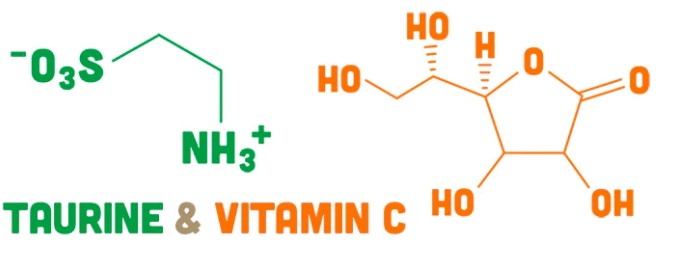
Fat Leaf Water key nutrients.
My main background is as a commercial video producer focused on food and beverage products. Some of my clients have included Pepsi, Lay’s, McDonald’s, Coors Light and Honey Nut Cheerios.
I also used to run a bread pudding business in New York City. That was a total fluke of a business! It all started when I was practicing some cookie recipes. A restaurant owner got wind of them and invited me to bake bread pudding for several of his restaurants. From there, I began selling my bread puddings at the Brooklyn Flea Market and several local grocery stores, such as Foragers, Amish Market and Zabar’s.
The business was growing very quickly, and all of a sudden, I received two large orders – one from Macy’s Cellar and another from Fairway. As much as I wanted to be able to fulfill their demand for the price points they needed, I just was not able to, especially since I was still baking out of my apartment and still holding down my day job of producing. At that point, I decided it was time to close my business, but I knew that one day I would start another food or beverage business when I had access to more resources.
As I gained more experience in advertising, I came across a few ad agencies that also happened to develop their own products (Madwell created RIFRAF, and The Many created Mixwell), which I thought was super interesting, since they were so well poised to market and advertise their product. So instead of coming at it from the more usual POV of having a culinary background, they were coming at it knowing how to show the product in its best light. Learning about these launches, I felt inspired to revisit my dream.
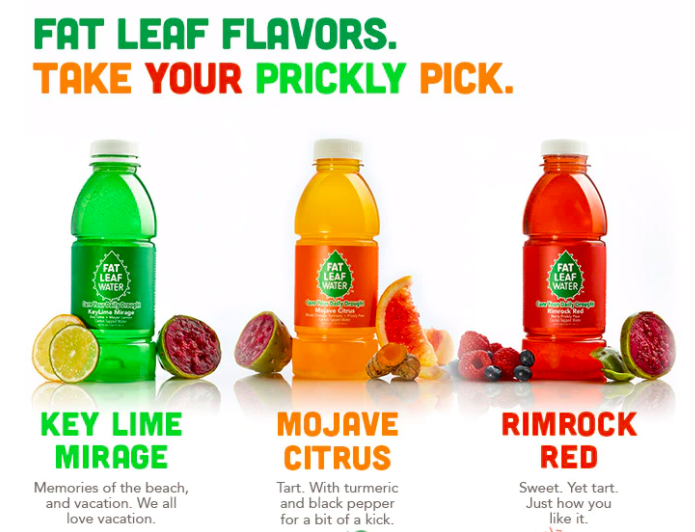
Three flavor options.
I happen to be a HUGE beverage fanatic. I am always perusing grocery store shelves for the newest and most trendy concoctions, and my fridge looks like a 7-Eleven refrigerator with all the range of drinks I stock, so it felt natural to hone in on a niche that I felt was underserved. I started by thinking about coconut water, and how the category grew from nothing so quickly.
I acknowledged the demand for plant based beverages, but wanted to offer something different, since I felt that the coconut water market was pretty well saturated. And I also wanted to offer something more local. Cactus water can be sourced from the United States, allowing for less emissions waste, as compared to coconut water, which often comes from Latin America and Asia. At the same time, I wanted to offer a product that felt mainstream and not a fringe product. I wanted to create a drink that could rival Zico and Vita Coco.
I also took inspiration from a drink I felt a lot of nostalgia for. As a kid who grew up in the ‘80s, I became accustomed to drinking what we affectionately called “Bug Juice”, which was essentially watered down Kool-Aid. It was a refreshing drink that all the campers would drink from a communal cooler after a long day of outdoor activity. It was vibrant, tasty and an excuse to catch up with friends. I wanted to create a version of this for the health + wellness age, so I made sure during the R+D process to keep vibrant colors and a sweet taste (yet with less sugar!) top of mind.
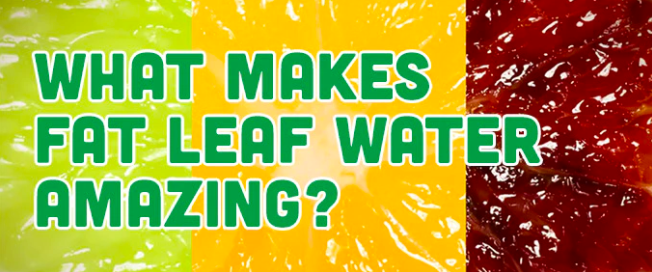
What makes Fat Leaf Water amazing?
I self funded this endeavor up until we launched the Kickstarter campaign. At this time, I partnered with Ruth Wong, who I met several years prior, bonding over our love of grocery store shopping. She’s a structural engineer by trade, mother of three, and PTA president, who helped build their school’s first Wellness Council that won the NYC Wellness Council of the Year award in 2018. The start of this partnership and the success of the Kickstarter campaign brought forth the funding we needed to produce our first commercial run.
To date, we have sent out a number of samples to influencers, who have responded positively with reviews, calling out their appreciation for the interesting flavors and nutritional benefits. Since we have not yet offered our drinks to the public, we are geared up now for a much broader validation phase.
Take us through the process of developing this unique sports drink using cactus water as a primary ingredient.

Cure Your Daily Drought.
I began the formulation process by working with East Breukelen Trading. I let them know my list of requirements (i.e. all natural, local, bright colors, etc.), and I offered my thoughts on four flavors. The one flavor that didn’t make the cut was a grape hibiscus flavor that just tasted too salty.
I’d say that on average, we went through four rounds of samples, tweaking the colors, sweetness levels and other flavor notes with each pass. The one big hiccup that we encountered along the way was that we discovered that the supplier of our prickly pear juice stopped sourcing their product from the U.S. and began sourcing it from Italy. Since we are dedicated to sourcing our ingredients from local producers, we needed to locate a new supplier and test the formulation again. Luckily, the new formula tasted even better!
One of our biggest challenges during this phase, and the main reason why it took me two full years to get ready to launch was deciding on our packaging. We set out to make a shelf stable product, which meant that we would have to use hot fill packaging. The off-the-shelf packaging options for hot fill are limited mostly to glass and a few generic plastic bottles with ridges.
Since we are a sports beverage, glass just does not make sense for our customers’ lifestyles. In addition, glass is not necessarily more eco-friendly, as it takes longer to decompose if not recycled and creates more emissions waste to transport. But since we are environmentally driven, plastic also did not feel right. Aluminum cans or tetrapaks could have been an option for us, but since one of our key attributes is our bright colors, I wanted to make sure that our product would be visible.
I spent months speaking with materials experts, trying to see if we could create a clear tetrapak or can, but I could not find a budget friendly way to accomplish that. So, we opted for plastic and just made sure to find the most eco-friendly plastic bottle we could (which is BPA free) and add a bunch of copy to the label reminding our buyers to recycle.
Describe the process of launching Fat Leaf Water.

The perfect way to stay hydrated on a hike.
We worked with a fantastic marketing team, who assisted with our website creation, graphics, copywriting, Kickstarter campaign and social media. We also hired a PR firm to help promote our Kickstarter campaign. Working with them, we sent out samples of our product to about 30 key influencers in the health and wellness space, which resulted in a number of reviews and social media posts, and we also conducted some Instagram sweepstakes to promote the campaign.
The other big effort behind the Kickstarter campaign was the creation of our video. Because of my background as a video producer for food and beverage products, this was a lot of fun for me! I had a number of resources that I tapped into, and my network was very generous in offering me some favors. We ultimately shot a video highlighting slow motion shots of juice splashes, berry drops and beautiful cactus imagery. A video like that could normally run something like $80K, but I managed to produce it for closer to $15K.
Most recently, we have been focused on learning the ropes of selling on Amazon. We are working with Pitted Labs, which specializes in Amazon marketing, and they have walked us through the process to get listed on Amazon, as well as how to generate reviews and advertise. We have a lot to learn I am sure, once Fat Leaf Water becomes available, I look forward to continuing the learning process.
How did you prove the concept using KickStarter?
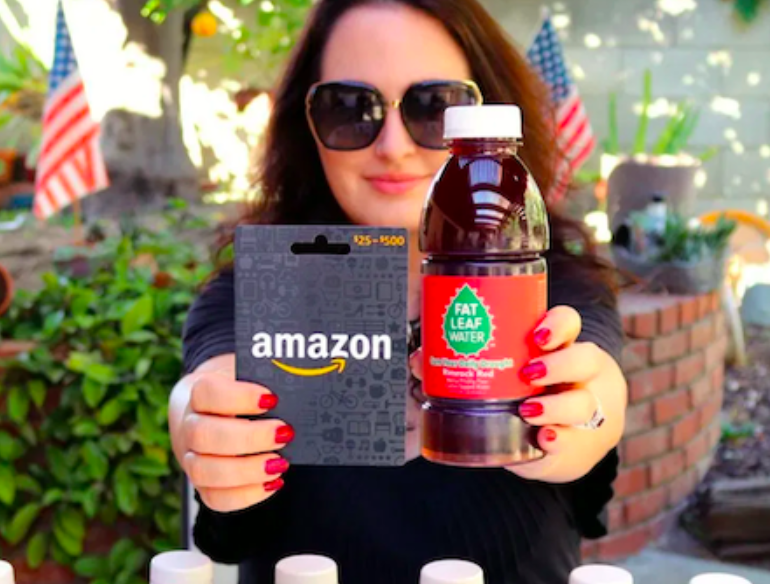
Fat Leaf Water partners with influencers and athletes to promote their beverage.
Since we haven’t yet launched, our only experience with gaining customers has been through our Kickstarter campaign. To a large extent, we relied heavily on our network of friends and family.
Through our social media channels and newsletter, we continued to update our followers and encourage them to contribute throughout the campaign. We also gained a few customers through our influencer integrations.
Near the end of the campaign, we held a Zoom panel discussion, where I posed questions to our Advisor, beverage formulator and my partner Ruth, all to give our supporters greater insight into our journey and the chance to to learn more about the future of Fat Leaf Water.
At the conclusion of that event, we received several large contributions, so I think the personal touch was of great value.
What does the future look like for Fat Leaf Water?
At the moment we are focused on our Amazon launch as our first sales channel. We chose Amazon, because of its low barrier of entry, and while I recognize that for many businesses the Amazon fees can be cost prohibitive, for us it is actually cheaper to ship with Amazon than to ship ourselves, and I think this is because of their structure for items based on weight and dimensions. Since our items are heavy relative to many other products with similar dimensions (drinks are heavy!), Amazon works out in our favor. We also chose Amazon for their analytics to help us explore our customer base.
We have also decided to use Fullfyld as our 3PL vendor; their storage fees are much cheaper than Amazon storage fees, so this is a great way to take advantage of Amazon’s benefits without the burden of their fees.
Once we have a strong sales flow in motion, one of our goals for the near future is to partner with prickly pear farmers to bring us closer to the source of our most important ingredient, to ensure that we are maintaining a sustainable and high quality product.
Through starting a beverage business, what have you learned?

Spooky cactus.
The most important takeaway that I’ve gained from our business so far is how crucial it is to align with good people. Not that this is a revolutionary idea, but it is why we have come as far as we have. From the very beginning, I began working with an advisor who had previously launched a successful kombucha company. I relied on him to advise on all of my many rookie questions, such as “How do I find a co-packer?”, “How do I raise money?”, and “where should we start selling our product, and how?”. My list of questions was endless.
I also aligned with several other key players. Our formulator was essential in advising on everything from nutritional analysis to chemical reactions to sustainable sourcing. And our other key partners (i.e. graphic designer, PR/marketing firms and brand ambassadors) have all been valuable stakeholders.
And most importantly, my partner Ruth has been a partner in the truest sense of the word, which means the world to me, especially since she came into the business later in the game, but holds just as much energy and enthusiasm as any founder would. She has been spearheading our brand ambassador program and social media strategy, and she ensures that we stay true to our vision of being an eco-conscious and ethical brand.
What platform/tools do you use for your business?
We host a website and also maintain Facebook and Instagram accounts. We started ramping up on Social Media for our Kickstarter campaign and now again on the horizon of our product launch on Amazon.
That said, we feel as if our followers are also on the journey with us, so we try to keep them updated through email blasts along with product updates on our posts. We recently started a blog using Medium, a repository of our thoughts, insights and findings in the space of being active and staying healthy.
What resources helped inspire you to start a business?
- The Ultimate Health Podcast – I have listened to this podcast since they began, and they are now at episode 375! They often interview entrepreneurs in the food + wellness space, offering insights into their operations, mindset and values.
- For Ruth, everywhere she goes and everyone she meets – she finds it fascinating how and why folks in different cultures eat and drink the way they do. It all started for her growing up in a Vietnamese and Chinese household, while living and surrounded by an all-American Midwest, small town environment. She couldn’t help but notice the complex difference between the culinary cultures and traditions. Living in NYC expanded that experience and education so much more. While living in NYC, Ruth had kids, which created an extra layer of organic inquisitiveness and curiosity.
Advice for other beverage entrepreneurs just starting out?
In general, I have learned to talk more about what I’m into, whether it’s a new venture, a new project, or a sprouting idea. Talk about it versus wait until it comes to fruition. I believe the passion and energy coming from within seems to radiate out to the person you’re conversing with. In turn that person becomes excited, and who knows where that might lead. That person might know someone who knows someone or they may simply have great personal feedback.
Also tremendously helpful for us are support groups for entrepreneurs. For instance, the Food Truck Empire! We were also asked to join the Facebook group called the Female Food Foundry after meeting the founder of the group. It’s a more specific group but comes to show the support is out there!

